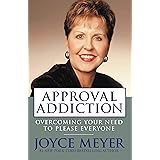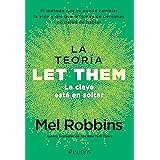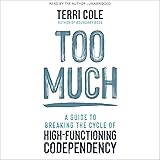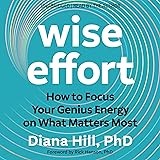A staggering portion of consumer spending isn’t just about need. Research shows impulse purchases often account for a significant percentage. Many consumers find themselves overspending, despite good intentions. This phenomenon highlights deeper psychological underpinnings of consumer behavior. The video above with Dr. Chloe Carmichael illuminates key drivers behind problematic spending habits. Understanding the psychology behind shopping addiction is crucial. We delve deeper into these mechanisms and explore advanced strategies for self-regulation.
Understanding the Psychology of Overspending and Shopping Addiction
Compulsive buying, often termed shopping addiction, goes beyond occasional retail therapy. It involves a persistent, repetitive pattern of buying. This behavior causes significant distress or impairs daily functioning. Dr. Carmichael identifies four core psychological motivators for overspending. She uses the acronym SAFE to simplify these complex drives. These factors are deeply rooted in our cognitive and emotional frameworks. Unpacking each element provides a clearer path to intervention.
Self-Image and Status Consumption
One primary driver for excessive shopping is self-image enhancement. Individuals often believe that acquiring certain items elevates their social standing. They think new possessions will make them a “better person.” This belief taps into deep-seated insecurities and societal pressures. Status consumption is a pervasive cultural phenomenon. We observe others with coveted items. Then, we internalize a desire for similar validation. The desire to mirror perceived successful individuals drives many purchases. This cycle perpetuates a feeling of inadequacy without new acquisitions. Material possessions become proxies for personal worth. This perception requires careful deconstruction.
This dynamic often relates to the “hedonic treadmill.” We constantly seek new stimuli for happiness. However, the satisfaction from new purchases is fleeting. Soon, we adapt to the new item. We then require another purchase to achieve the same emotional lift. Social comparison theory also plays a role. We compare ourselves to others. Perceived deficits can trigger buying behaviors. The aim is to close this perceived gap. Addressing underlying self-worth issues is paramount. This can break the cycle of image-driven overspending.
Accomplishment as a Retail Reward
A second powerful motivator for shopping is the feeling of accomplishment. Dr. Carmichael notes clients feeling they achieve something by merely buying items. Buying vitamins, for example, feels like taking them. This is a cognitive shortcut or a form of magical thinking. The act of acquisition provides a dopamine hit. This chemical rush mimics true achievement. The brain registers the “win” of a purchase. This sensation is often disconnected from the actual utility or benefit of the item. This neurochemical reward reinforces the buying behavior. It can become a detrimental loop.
This mechanism is particularly potent in today’s digital age. Online shopping offers immediate gratification. One click can complete a purchase. The sense of “task completion” is high. This can mask underlying procrastination or avoidance behaviors. People feel productive without real effort. The dopamine feedback loop strengthens with each transaction. Marketers skillfully leverage this. They create a seamless and rewarding checkout process. This reinforces the psychological link between buying and accomplishment. Breaking this link requires conscious effort and new reward systems.
Fear and Scarcity Mentality in Consumerism
Fear constitutes another significant psychological trigger for overshopping. Many individuals harbor a deep fear of not having enough resources. This fear often stems from past experiences or perceived future uncertainties. It can manifest as a tendency to stockpile goods. This behavior offers a sense of security and control. The thought of potential lack drives excessive acquisition. Discount events often exacerbate this fear. “Limited time offers” trigger urgency. Consumers fear missing out on a perceived good deal. This creates a powerful incentive to buy now.
This scarcity mentality is a well-known cognitive bias. It often overrides rational decision-making. Consumers might buy items they don’t need. They do this simply because the perceived opportunity is fleeting. The anxiety of scarcity can be profound. It compels action, even when illogical. Economic uncertainties can heighten these anxieties. This leads to increased stockpiling behavior. Understanding this primal fear is vital. It allows individuals to challenge its influence. Recognizing manipulative marketing tactics also helps. These tactics often exploit this deep-seated fear.
Escapism and Emotional Regulation Through Shopping
Finally, escapism provides a strong psychological pull towards shopping. Some individuals turn to retail environments to cope with negative emotions. A bad day might lead to a shopping spree. The act of browsing and buying offers a temporary distraction. It provides a momentary escape from stress, boredom, or sadness. This behavior is a form of self-medication. The emotional uplift is immediate, albeit short-lived. This temporary relief can create a powerful dependency. It becomes a maladaptive coping mechanism.
This phenomenon is often termed “retail therapy.” While mild retail therapy can be harmless, it becomes problematic when habitual. It prevents addressing the root causes of distress. The temporary high wears off quickly. Feelings of guilt or financial strain often follow. This can create a vicious cycle. The negative emotions return, prompting another shopping episode. This cycle perpetuates a reliance on consumption. Finding healthier emotional regulation strategies is essential. These can include mindfulness, exercise, or therapy. Replacing shopping with constructive coping methods is key. This helps individuals navigate difficult emotions effectively.
Implementing Advanced Self-Regulation Strategies: The SCRAM Method
Controlling impulsive buying and overspending requires conscious effort. Dr. Carmichael suggests practical strategies using the acronym SCRAM. These methods provide tangible tools for behavior modification. They integrate principles from cognitive behavioral therapy (CBT). Applying these techniques consistently helps build new habits. This fosters greater financial and emotional well-being. Each element addresses a specific aspect of the overspending problem. Let’s explore each component in detail. These are expert-level tools for managing consumption.
Self-Statements: Re-scripting Internal Dialogues
The “S” in SCRAM stands for self-statements. Once you identify your personal triggers for overshopping, craft a simple, empowering statement. For someone driven by self-image, “I am enough” is a powerful affirmation. This directly counters the belief that external possessions define worth. These statements act as cognitive anchors. They ground you in your personal values. They help interrupt the impulse-to-buy sequence. Practicing these statements reinforces a healthier self-perception.
Self-statements are a core CBT technique. They challenge automatic negative thoughts. They replace them with rational, affirming beliefs. Consistency is crucial for their effectiveness. Repeating these statements strengthens neural pathways. It rewires the brain’s response to shopping triggers. Identify your core motivation for overspending. Then, formulate a counter-statement. This personalizes the intervention. For fear-based shoppers, “I have enough” might be more suitable. These mental tools empower conscious decision-making. They help to break free from habitual patterns.
Cash Only: Reinforcing Spending Boundaries
The “C” in SCRAM represents cash-only spending. Many people find using only physical cash highly effective. It imposes an immediate, tangible limit on spending. Credit cards often create a disconnect. They separate the act of buying from the act of paying. This psychological distance reduces the perceived cost. Using cash makes spending feel more real. It triggers a stronger emotional response. Once the cash is gone, spending stops. This simple rule provides a powerful external control mechanism.
This strategy leverages the concept of “pain of paying.” Studies show that using cash increases the perceived pain. This friction discourages impulsive purchases. The tactile experience of handing over money creates a mental hurdle. It forces a pause before completing a transaction. This pause is critical for re-evaluating needs versus wants. Digital payments, conversely, minimize this pain. They encourage frictionless consumption. By reverting to cash for discretionary spending, individuals re-establish boundaries. They regain control over their financial outflow. This method is a robust defense against overspending.
Return Unnecessary Items: Post-Purchase Reflection
The “R” in SCRAM encourages returning items you don’t need. This step is about post-purchase reflection and action. Often, the thrill of acquisition fades quickly. Doubts about a purchase emerge shortly after. Returning items provides a valuable opportunity. It reinforces conscious decision-making. It also rectifies earlier impulsive choices. This action helps to break the cycle of buyer’s remorse followed by more buying. It teaches accountability for spending habits. This reduces overall inventory and debt.
This strategy also allows individuals to experience the “loss” of the item. This can be a powerful learning experience. It counters the initial high of acquiring. The effort of returning also adds a beneficial friction. This might deter future thoughtless purchases. Furthermore, the financial recovery is immediate. It mitigates the financial impact of overspending. Embracing returns as a part of the purchasing process is key. It fosters a more mindful approach to consumption. This empowers consumers to correct past mistakes proactively.
Amazon Wish List: Fulfilling Desires Mindfully
The “A” in SCRAM points to creating an Amazon Wish List. This clever technique addresses the “wanting” aspect of consumption. It allows individuals to fulfill the desire to acquire without immediate purchase. Adding items to a wish list provides a similar dopamine hit. It simulates ownership or future acquisition. The gratification is delayed. This teaches self-regulation and patience. It also creates a buffer for thoughtful consideration. Many items added to a list never transition to a cart. This fulfills the urge without the actual transaction.
This strategy leverages the power of visualization. Imagining future ownership can satisfy the present craving. It’s a form of mental budgeting for desires. It separates the impulse from the action. Over time, individuals often realize they don’t truly need most items on the list. This method is particularly effective for online shoppers. It provides an immediate outlet for impulse. Yet, it prevents immediate financial commitment. It promotes a healthier relationship with consumer desires. This is a robust tool for digital self-control.
Money Management: Vigilance Over Financial Health
Finally, the “M” in SCRAM emphasizes vigilant money management. Regularly checking credit card and bank statements is crucial. This practice provides a clear, objective view of spending patterns. It reveals where money is truly going. This transparency combats denial and unconscious spending. It forces accountability for every transaction. Understanding your financial capacity is paramount. This prevents accumulating unsustainable debt. It forms the bedrock of responsible consumer behavior.
This involves more than just glancing at a balance. It entails detailed budget tracking. Analyze spending categories. Identify recurring problem areas. Tools like budgeting apps can facilitate this process. A clear understanding of financial limits empowers decision-making. It provides the data necessary for informed choices. This proactive approach to money management is preventative. It helps to catch overspending before it spirals. It solidifies financial health and fosters long-term well-being. This ongoing vigilance is essential for sustained control over shopping behaviors.











